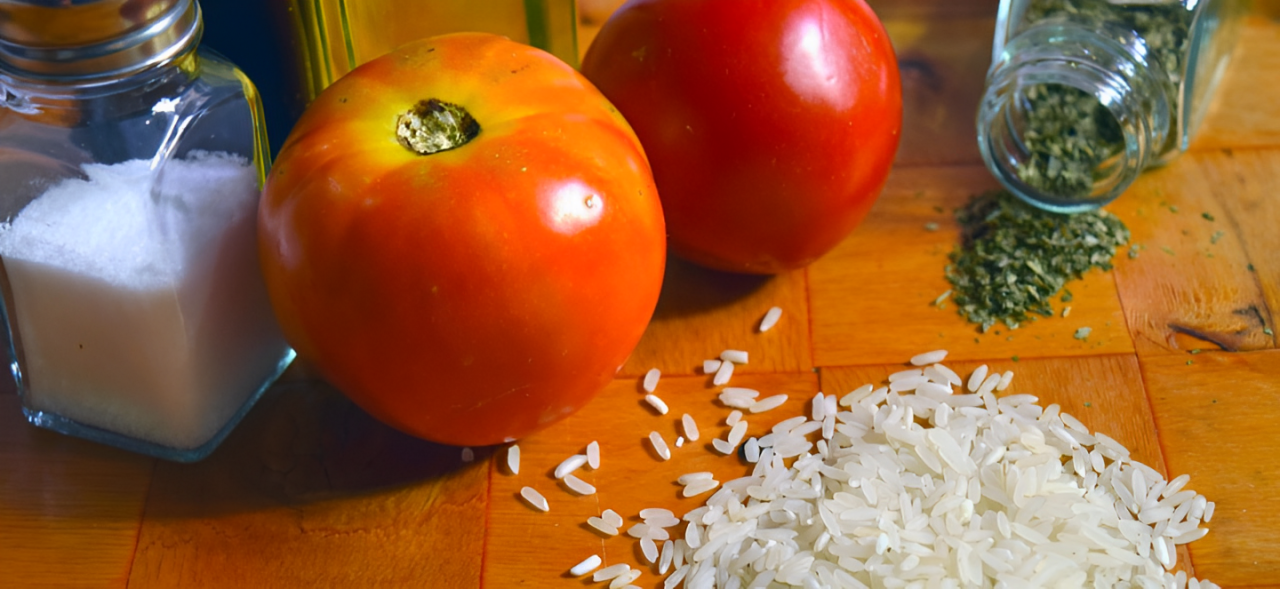
MSU researchers, community leaders address arsenic in rice and other issues of food safety
Published March 29, 2025
Consumed by billions of people each year, rice ranks among the most popular grains in the United States and around the world. From gumbo to sushi, paella and tahdig, breakfast cereals, and even alcoholic beverages, rice is a key ingredient in a variety of foods and drinks.
In American and international cuisines, long grain white rice is the most commonly consumed variety, followed by brown rice. A popular whole grain, brown rice is often presented as a healthy alternative to white rice because of its nutrients, vitamins and fiber. But research from MSU College of Agriculture & Natural Resources (CANR) faculty members Felicia Wu and Christian Kelly Scott is calling the health benefits of brown rice into question.
According to Wu and Scott’s study, arsenic levels in brown rice, and brown rice products, are significantly higher than those in white rice—ranging from 72.2% to 98.3% higher. This difference is caused during the milling process when the outer husk and bran layers, where inorganic arsenic is found, are removed to produce white rice but remain for brown rice.

Felicia Wu, John A. Hannah Distinguished Professor of Food Safety, Toxicology, and Risk Assessment at MSU.
Why rice contains arsenic
Arsenic is a naturally occurring element in water and the earth’s crust. Because of the way cultivated rice is grown—in continually flooded paddies—it is more likely to absorb arsenic from the soil through its roots; this happens at a rate nearly 10 times that of other grains.
Arsenic can also be added to soil through industrial uses; this is known as legacy arsenic.
“The southeastern U.S. is where we are growing a lot of rice now,” Wu said. “And we’re still dealing with the legacy of pre-Civil War days when there was a lot of cotton production in the southeastern U.S.”.
The application of arsenical pesticides to control the boll weevil in cotton ended up in the soil and accumulated overtime which is what we are left to deal with today, Wu said.
In other parts of the world, namely South Asia, large amounts of naturally occurring arsenic appear in soil and water. As a result, levels of arsenic found in rice throughout the rest of the world is higher compared to rice in the United States.
Wild rice in the Great Lakes
Wu and Scott compared arsenic levels in brown versus white rice across five U.S. states—California, Texas, Louisiana, Mississippi and Arkansas—where cultivated rice is primarily grown. But here in the Great Lakes, Manoomin, the Ojibwe word for “wild rice”, faces similar threats of contamination from heavy metals like lead, cadmium, mercury and arsenic that are absorbed during the growth process.
While not technically “rice”, Manoomin is a grain-producing grass native to the Great Lakes and parts of Canada that grows in the shallow areas of streams, lakes and wetlands. Both human-caused and natural disturbances, like draining Michigan wetlands to combat malaria in the 1850s, the introduction of invasive species to the Great Lakes in the early 1800s, dam building and copper mining have contributed to the disappearance of Manoomin and its changing environmental habitat.
Growing blackened, commercial wild rice—commonly found in stores—near traditional, hand-harvested Manoomin beds also risks cross-pollination which could eventually compromise Manoomin’s genetic authenticity.
Roger LaBine, a wild rice expert from the Lac Vieux Desert Band of Lake Superior Chippewa Indians in Michigan who has been involved with Manoomin restoration efforts since 1972, noted that while wild rice populations have been threatened in Michigan, Minnesota and Wisconsin, they appear to be at a greater risk in Michigan.
“In my community, we don’t have any of our wild rice beds within our tribal boarders or tribal lands,” LaBine said. “All of our wild rice restoration sites are basically on public waters.”
LaBine stated that the U.S. Army Corps of Engineers, who work with his tribe on restoration efforts, have proposed testing for arsenic in the tribe’s project areas.

Christian Kelly Scott, Postdoctoral Research Associate in the Department of Food Science and Human Nutrition.
Associated health risks
Environmental changes have not only threatened the survival of Manoomin but also directly impact the safety of local food sources. This raises concerns about the health risks associated with arsenic and other heavy metal exposure through consumption.
Wu and Scott noted that Americans who regularly consume brown rice, as opposed to white rice, have higher estimated arsenic exposures. Young children, particularly those under five, who are the heaviest consumers of rice per unit bodyweight, are even more vulnerable to toxicity.
Even at low levels, long-term arsenic exposure has been linked to multiple types of cancer (skin, lung and bladder) and cardiovascular disease.
“If you’re consuming rice in the U.S., acute arsenic poisoning is not really a risk,” Scott said. “What we’re talking about is the chronic exposure, so over a long term. There’s cardiovascular, there’s risk to the endocrine system, and there’s an increased risk of diabetes associated [with] a longer-term exposure level.”
Scott explained that there are limited parallels between brown, white and wild rice, as wild rice is a very different crop, but said there may be less arsenic in wild rice because of the way it grows—naturally in water reservoirs that already exist.
Wu expressed that while wild rice is not uniform, with four types in the Zizania genus, the variety gathered by Native Americans is typically not flooded, which should result in lower arsenic levels.
Both experts agreed that more research is needed.
Ways to reduce arsenic exposure from rice
Scott identified several ways to reduce arsenic exposure from rice, which include cultivation techniques, cooking methods, maintaining a diverse diet, and public awareness and education.
During the process of alternate wetting and drying, rice paddies are periodically drained instead of being continually flooded. This reduces the amount of water being used to grow rice and limits the conditions that mobilize arsenic in soil.
With furrow irrigation, water is directed into small channels between rows of plants. This reduces waterlogging and limits the uptake of arsenic into rice.
Thoroughly washing then parboiling rice before consumption can also significantly lower arsenic content, but it’s important to note that in environments where the arsenic level in water is high—areas outside of the U.S.—this method can have the opposite effect.
A diversified diet, especially for children, that includes vitamins, minerals and various sources of protein can help to reduce arsenic exposure from brown rice.
And educating consumers, particularly vulnerable populations, about the presence of heavy metals in foods can reduce exposure.
The FDA’s Closer to Zero initiative, which began in 2021, aims to reduce exposure to toxic elements like arsenic, lead, cadmium and mercury in foods consumed by infants and young children.

Jen Owen, Associate Professor in the Department of Fisheries and Wildlife and Director of the Corey Marsh Ecological Research Center.
Wild rice restoration efforts
The FDA’s work to address arsenic exposure from rice is just one part of a broader initiative to protect human health and the environment. Similar efforts to restore Manoomin and protect its cultural and ecological significance in the Great Lakes are quickly gaining momentum.
The Michigan Wild Rice Initiative (MWRI), established in 2017, brings together representatives from 12 federally recognized tribes, as well as state and federal agencies, to educate, restore and protect Manoomin.
At MSU, the Corey Marsh Ecological Research Center (CMERC) has an ongoing project, initiated by a Tribal student, on Indigenous wild rice research and restoration. Originally MSU farmland acquired in 1858 under the Swamp Land Act, the CMERC operated as a muck soils research farm, testing fertilizers and crop growth, from 1941 to 2012. Due to repeated flooding and the high cost of operation, the center shut down in 2012 and sat unused for six years before Jen Owen, an Associate Professor in the Department of Fisheries and Wildlife and the Director of CMERC, discovered the land was about to be sold and successfully advocated to keep it.
“I shared a new vision for the property, because I thought there was an opportunity here,” Owen said. “And what a great thing to be so close to campus. It’s [CMERC] 20 minutes away and a place for undergraduates to actively engage in research that they’re being the leaders of.”
The center supports both student and faculty-led projects, exploring opportunities for collaboration with Indigenous communities and offering hands-on research opportunities in wild rice conservation.
To read more about student research involving wild rice happening at CMERC, click here.
Brown versus white and wild rice
So, is brown rice healthier than white rice? And how does wild rice compare? The answer depends on your definition of “healthy” and whether you’re considering nutritional or environmental factors. Brown rice has more nutritional benefits, in terms of vitamins, minerals and fiber, than white rice, but less than wild rice.
Brown rice is also more environmentally friendly than white rice, requiring less water and processing to manufacture. But brown rice is associated with significantly higher levels of arsenic than white rice, which has long-term health effects.
More research is needed to compare the arsenic levels in wild rice to those in brown and white rice. Because wild rice grows in very different conditions, understanding how these differences affect arsenic absorption will help to assess any potential health risks associated with consuming wild rice.
Story by Aja Witt
